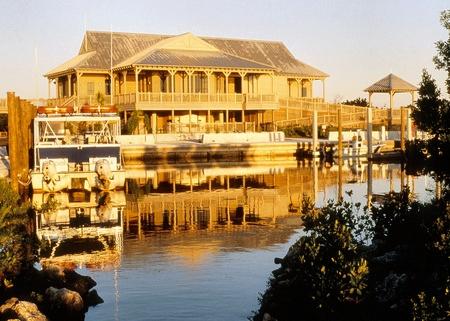The National Park Service wants to interview people with firsthand knowledge of Black Beach, a segregated beach that once occupied the site of the Dante Fascell Visitor Center at Convoy Point in Biscayne National Park. The oral histories are needed to help guide the park's public interpretation of racial segregation in southern Florida during the Jim Crow era.
When Congress created Biscayne National Monument in October 1968, America was in the throes and agonies of implementing the Civil Rights Act of 1964, the landmark legislation that banned major forms of discrimination against blacks and women, including the racial segregation of public beaches, parks and other facilities serving the general public. By the time Biscayne National Monument was redesignated Biscayne National Park in 1980, segregated public facilities had virtually disappeared in America. Three decades later, they are even fading from memory.
Sweeping institutionalized segregation into the dustbin of history was a good thing, but extinguishing memories of it is not. There are important lessons to be learned by documenting the facts of racial segregation and exploring their impacts on our culture and our cultural landscape. This is to say that history is a great teacher, if only because it helps us to know what we have done wrong and what we must never allow to happen again.
There is a very real story of this type to be told at Biscayne National Park. Back in the late 1950s, when Jim Crow laws still governed racial relations in the South, Dade County, Florida, established a "Blacks Only" beach on Convoy Point adjacent to the "Whites Only" beach at Homestead Bayfront Park nine miles east of Homestead, Florida. Black Beach was operated as a racially segregated facility until the beaches were desegregated in the 1960s.
In the late 1960s, Dade County sold the Park Service a tract of land at Convoy Point adjacent to Homestead Bayfront Park. The Park Service needed the land to establish a mainland-based, auto-accessible operations and visitor services hub for the new Biscayne National Monument -- a park that consisted almost entirely of water and a string of small islands (keys). In one of those small accidents of history, the Park Service ended up building Biscayne's main visitor facility, the Dante Fascell Visitor Center, on the former site of Black Beach.
After giving the matter scant attention for decades, Biscayne National Park now wants to make sure that the story of Black Beach is well and properly told. This is more than routinely difficult, since the public record is sparse and doesn't tell us much about the human component -- the thoughts and feelings and experiences of the blacks and whites confined to separate beaches and forbidden to mix during the turbulent years of the Civil Rights movement in south Florida.
Gathering oral histories ("remembered pasts") has proven to be an excellent way to fill in the gaps in the written record. A project now underway at Biscayne is gathering information through interviews with people who have had firsthand experiences with Homestead's "blacks only" beach. Old photographs, newspaper clippings, and other materials are also welcomed.
If you have Black Beach memories you would like to share, or you know someone who does, please contact Charles Lawson at 786-335-3676 to schedule an interview.




Comments
It was never a small accident... I wouldn't consider using that phrasing nor any terminolgy for something that was largly prevalent, to make it seem like a small matter.